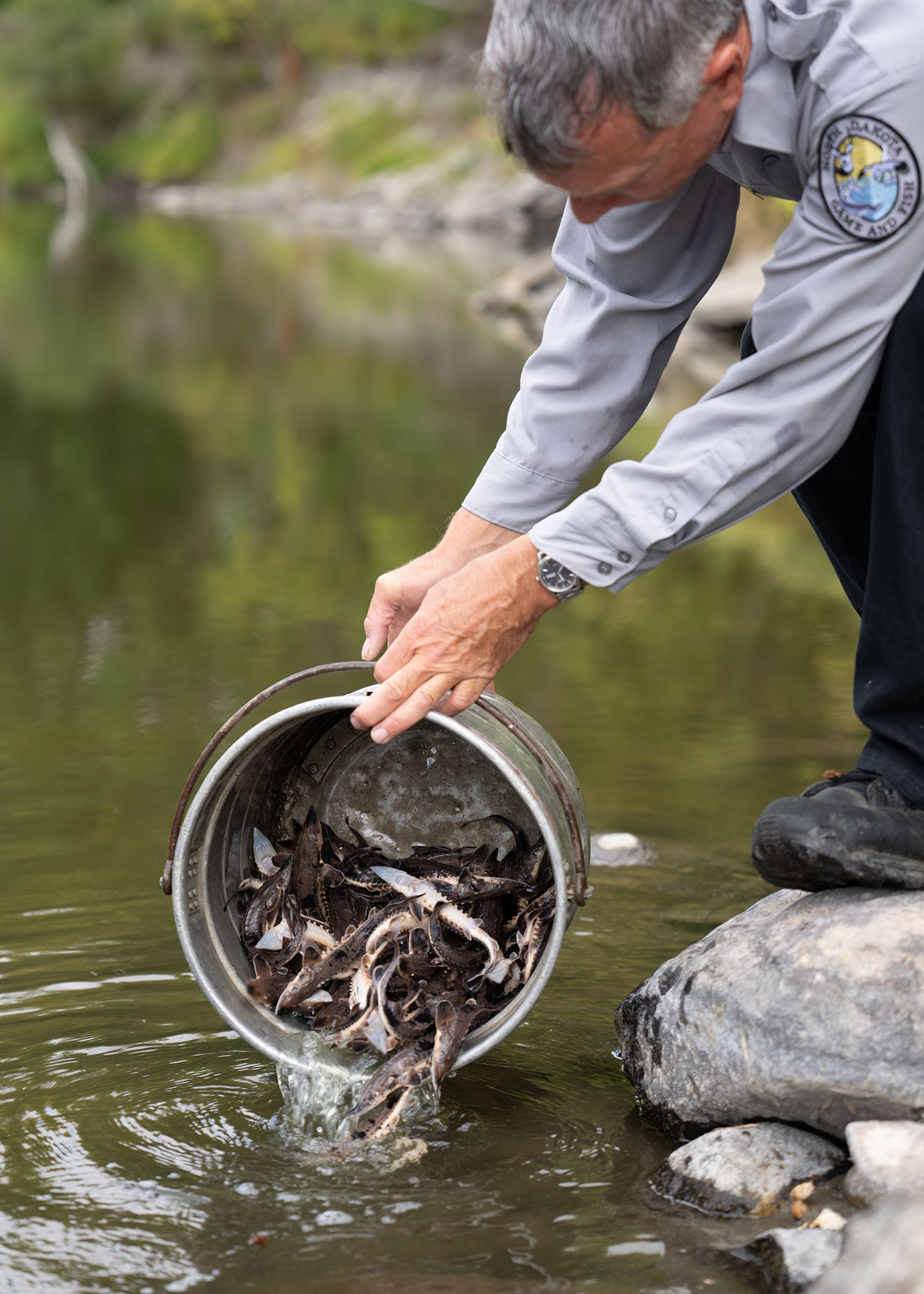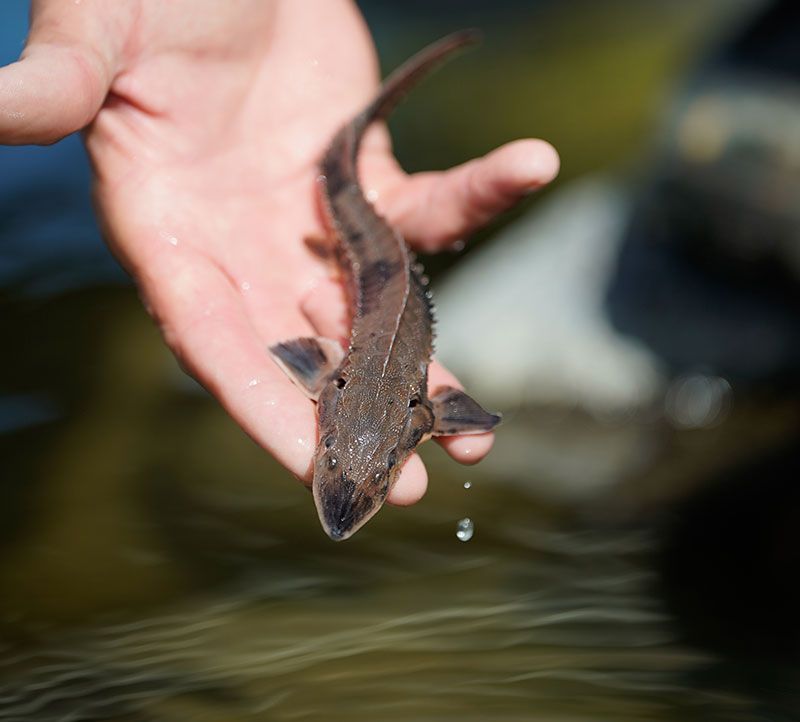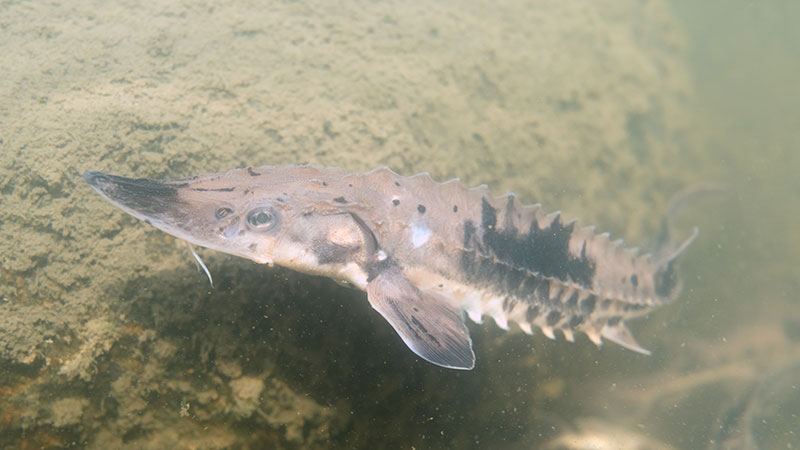Sturgeon Return to Pembina River
Ron Wilson

Fish long missing from a tributary of the Red River in northeastern North Dakota are home again.
In late September, North Dakota Game and Fish Department fisheries personnel released 1,000 lake sturgeon into the Pembina River to reestablish a population of fish that can live long and grow large.
The reintroduction of the 6- to 8-inch sturgeon was a first in the agency's history and it will be years before biologists can determine if the effort to launch a self-sustaining population is successful.
State fisheries managers don't have to look too far to see the blueprint for such an effort as the Minnesota Department of Natural Resources has been doing similar work with noticeable gains for more than two decades.
"In an attempt to reestablish the population of lake sturgeon in the Red River watershed, which was part of their native range, the Minnesota DNR has actually been stocking lake sturgeon in various places throughout the Red River watershed since about 1997," said Todd Caspers, Game and Fish Department fisheries biologist in Devils Lake.
"These efforts have been successful at reestablishing the species in the Red River and some of those tributary rivers in Minnesota. And they're actually seeing adult sturgeon that are attempting to spawn on their own in several places now."
Scott Gangl, Department fisheries management section leader, said fisheries biologists are hoping the newly released lake sturgeon will imprint on the Pembina River and someday spawn there once they are able and ready.
The answer to that won't be revealed for years.

"Lake sturgeon have been gone from the Pembina River for so long, it's just not natural for them to move up it and spawn," he said. "The males we just stocked won't be mature enough to spawn for a decade or more and the females will be in their late teens to early 20s before they are ready."
Caspers said there are historical records of lake sturgeon in the Pembina River, but due to several factors such as overfishing and habitat degradation from the construction of a number of low head dams in the Red River and elsewhere, the lake sturgeon population dwindled and eventually disappeared.
Gangl said the Department decided to stock lake sturgeon in the Pembina River in 2023 in anticipation of work down the road to modify an existing low head dam on the Pembina River near the confluence of the Red River to allow the fish passage from one river to the next.

